
views
Using Windows 10

Click the Windows Start menu Windows Start. It's the button with the Windows logo. By default, it's in the lower-left corner in the taskbar.
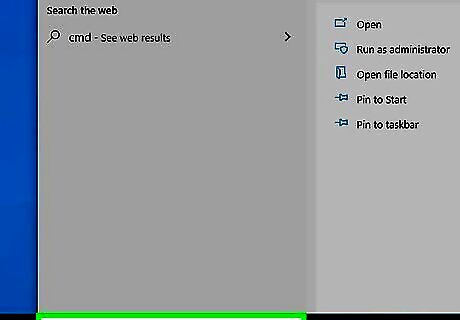
Type cmd. This displays the Command Prompt icon in the Windows Start menu.
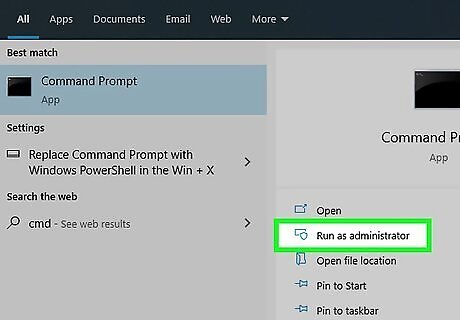
Right-click the Command Prompt and click Run as Administrator. This opens the Command Prompt with administrative privileges. You must be logged in to a Windows user account with administrative privileges to be able to run the Command Prompt as an administrator.
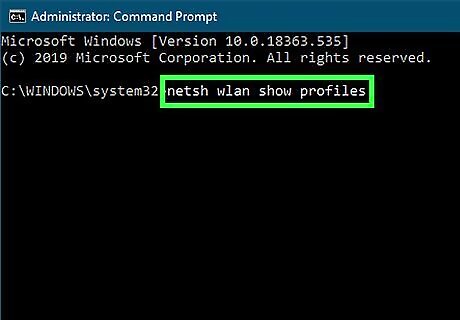
Type netsh wlan show profiles and press ↵ Enter. This displays a list of networks your computer has been connected to.
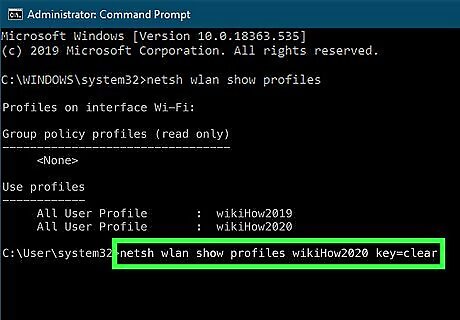
Type netsh wlan show profiles name="network name" key=clear and press ↵ Enter. Replace "network name" with the name of the network you want to find a password for. Make sure you put the network name in quotation (" ") marks. For example, if your network is called "PTCL-BB", you would type "netsh wlan show profiles name="PTCL-BB" key=clear" and press the "Enter" button. This displays information about the network.
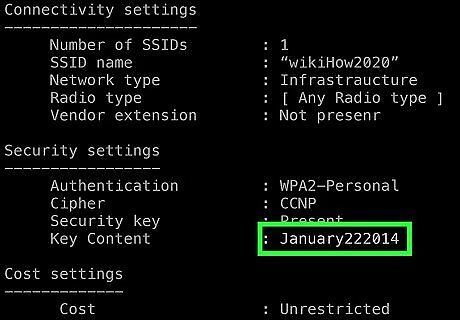
Locate the password. The password is listed next to "Key content" in the network information listed in the Command Prompt.
Using MacOS

Click the magnifying glass icon Mac Spotlight. It's in the menu bar at the top in the upper-right corner. This displays the Spotlight search bar.
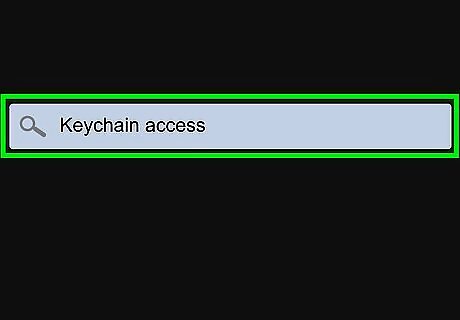
Type Keychain Access in the search bar and press ↵ Enter. This opens the Keychain Access app.
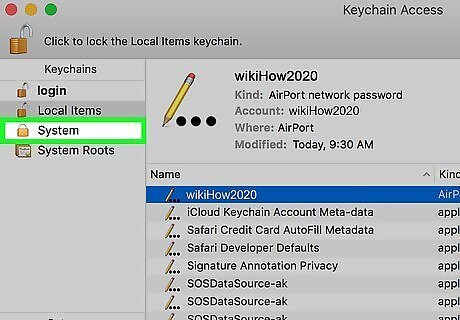
Click System. It's in the sidebar panel to the left in the Keychain Access app below "Keychains".
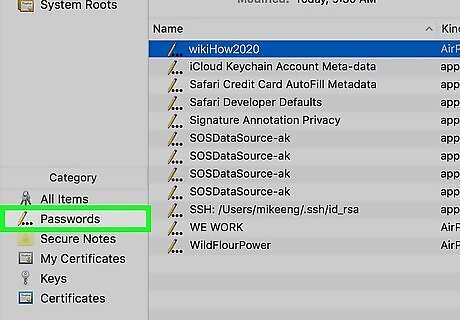
Click Passwords. It's in the sidebar panel to the left in the Keychain Access app below "Keychains". This filters the Keychain items to items with a password.
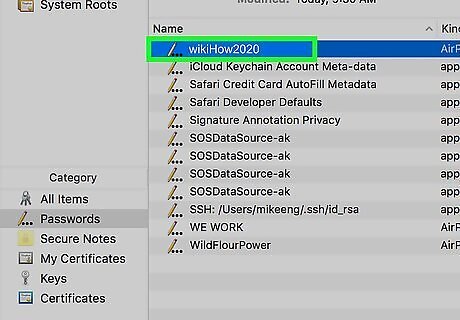
Double-click a Wi-Fi network name. All Wi-Fi networks your Mac has been connected to are listed below "Name" in the Keychain Access app. Double-click a network name to view information about the network connection.
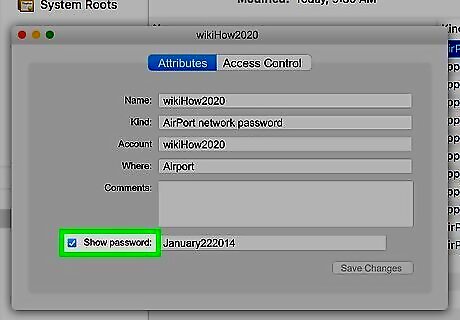
Click the checkbox next to "Show Password." It's at the bottom of the network information window.
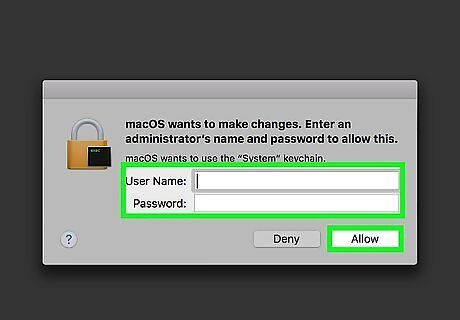
Enter an administrator's username and password and click Allow. After you authenticate your username, it asks you to enter the username and password of an administrator. Enter the username and password of an account that has administrative privileges on your Mac. Click Allow to continue. You may have to enter this information twice.
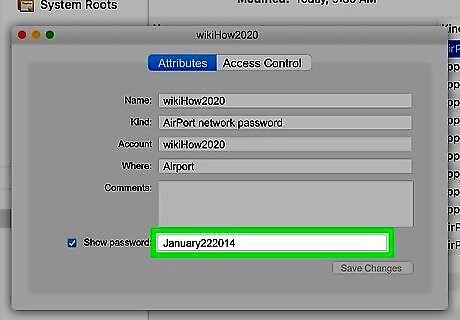
Locate the password. The password is listed in the field next to "Show Password" at the bottom of the network information window.
Using a Web Browser
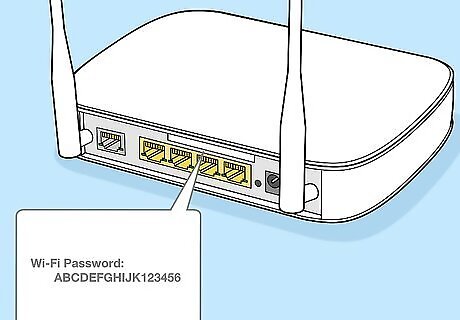
Check the label on your router. The Wi-Fi router password is often printed on a label on your router. Before doing anything, check to see if your Wi-Fi password is printed on your router. If the default username and password to log in to your router's user interface is listed, note that as well.
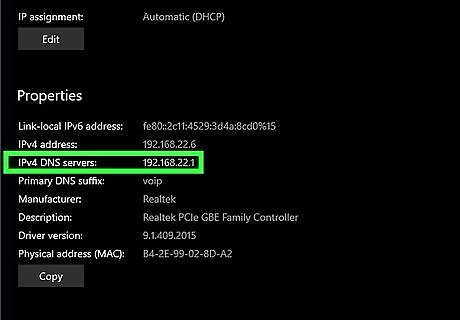
Get your router's IP address. Common router addresses include 10.0.0.1, 192.168.1.1, or 192.168.0.1 or similar. Use the following steps to get your router's IP address. Windows: Click the Windows Start menu. Click the Gear (Settings) icon. Click Network & Internet. Click Status. Click Change connection properties. Scroll down and note the number next to "IPv4 DNS Servers:". Mac: Click the Apple icon in the upper-left corner. Click System Preferences. Click the Network icon. Note your IP address in the text below "Connected". iPhone: Open the Settings app. Tap Wi-Fi Tap the icon with an "i" next to your Wi-Fi network. Note your IP address below "IPv4 Address". Android: Open the Settings app. Tap the magnifying glass icon and search for Wi-Fi. Tap Wi-Fi. Tap your Wi-Fi connection. Note your IP Address. If it's not listed on this page, tap Advanced and look for it on the "Advanced" page.
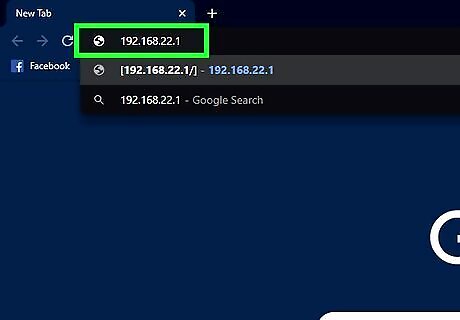
Enter your IP address in the address bar of a web browser. This opens the user interface for your router. Your router assigns a unique IP address to each device connected to it if your IP address is listed as "192.168.0.154", "192.168.1.155" or something similar, that is the IP address of your device, not the router. To find the IP address of your router, remove the last two digits from the number at the end of the IP address. For example, instead of "192.168.0.154", enter "192.168.0.1" into your web browser.
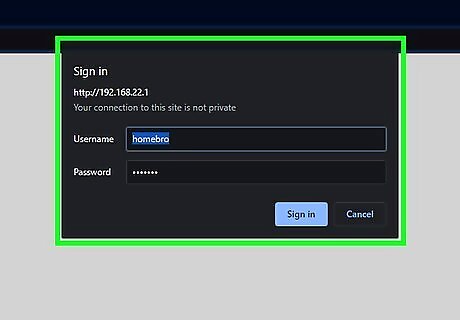
Log in to the user interface. If you have not set up your router, you'll need to log in with the default username and password to log in to your router. Consult the user's manual or manufacturer's web page to find out what the default username and password are. Common usernames and passwords include "admin", "password", "12345" or just leaving the field blank. The default username and password may also be printed on a label on your router.
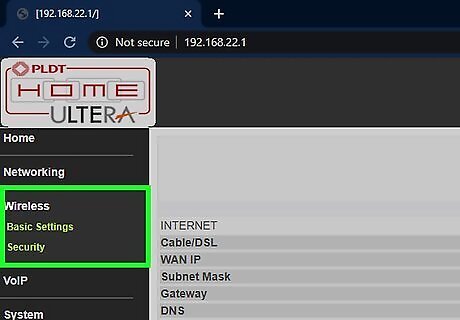
Locate the Wireless Settings. The user interface for each router is different. Look for the Wireless settings in the menu to the left or at the top of the page. Click the Wireless Settings when you find them.
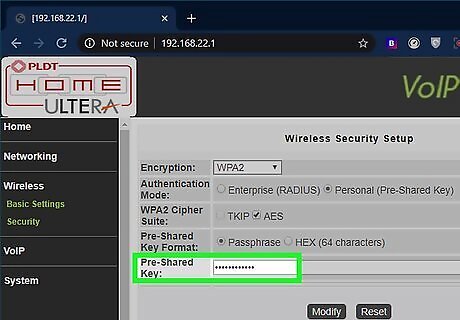
Click or tap the Password settings. It may be under "Wireless Security", "Security Key" or something similar.
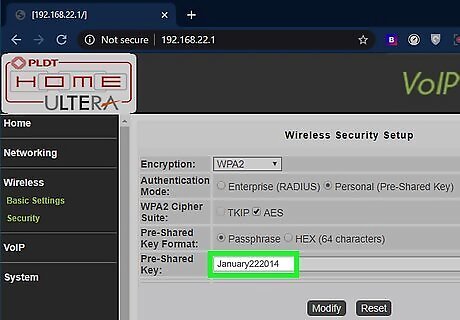
Check the password. It should be in the password box. You may have to click or tap a checkbox that says "Show Password". If the password is not visible, you can use this menu to change the password.




















Comments
0 comment